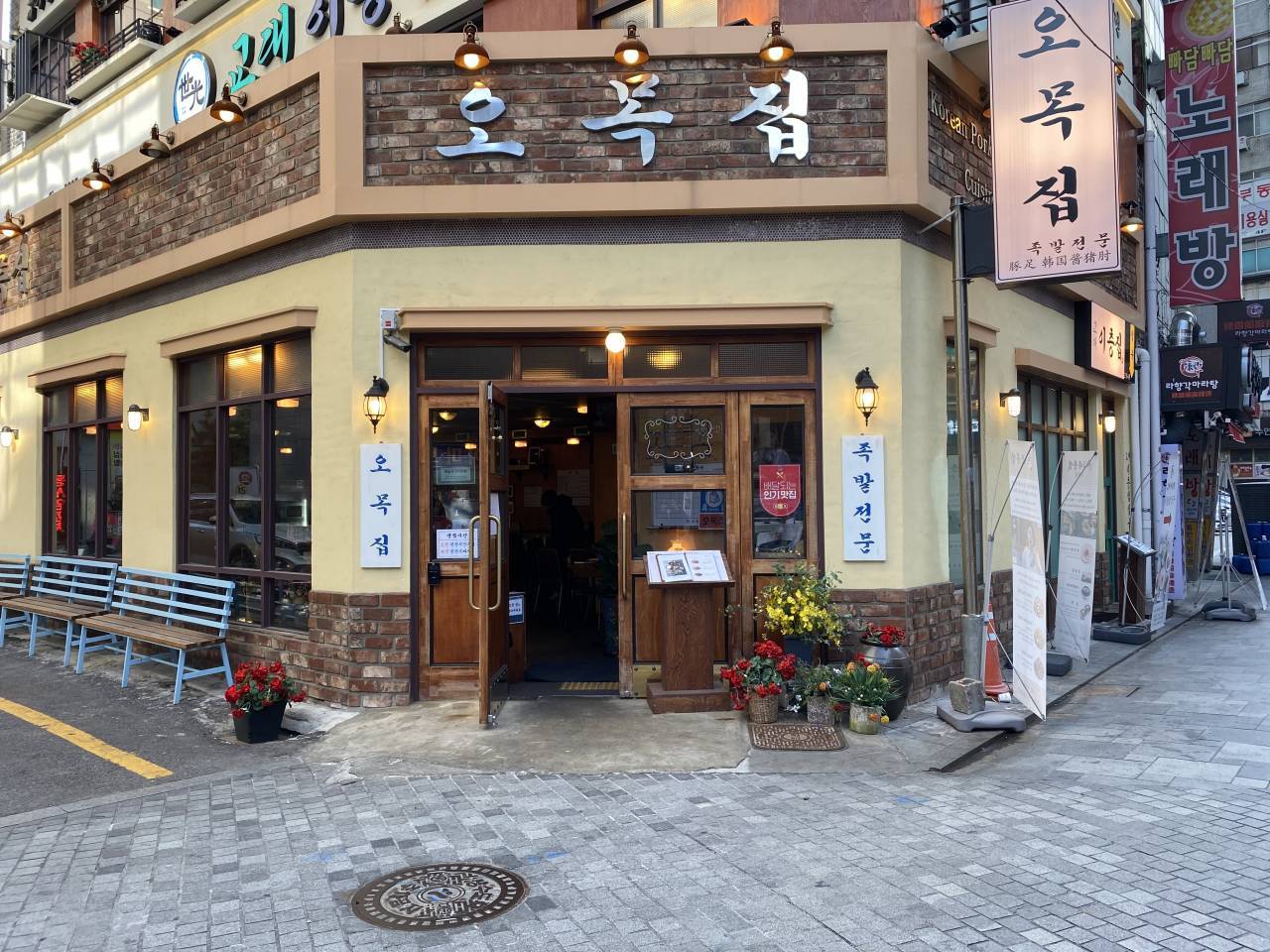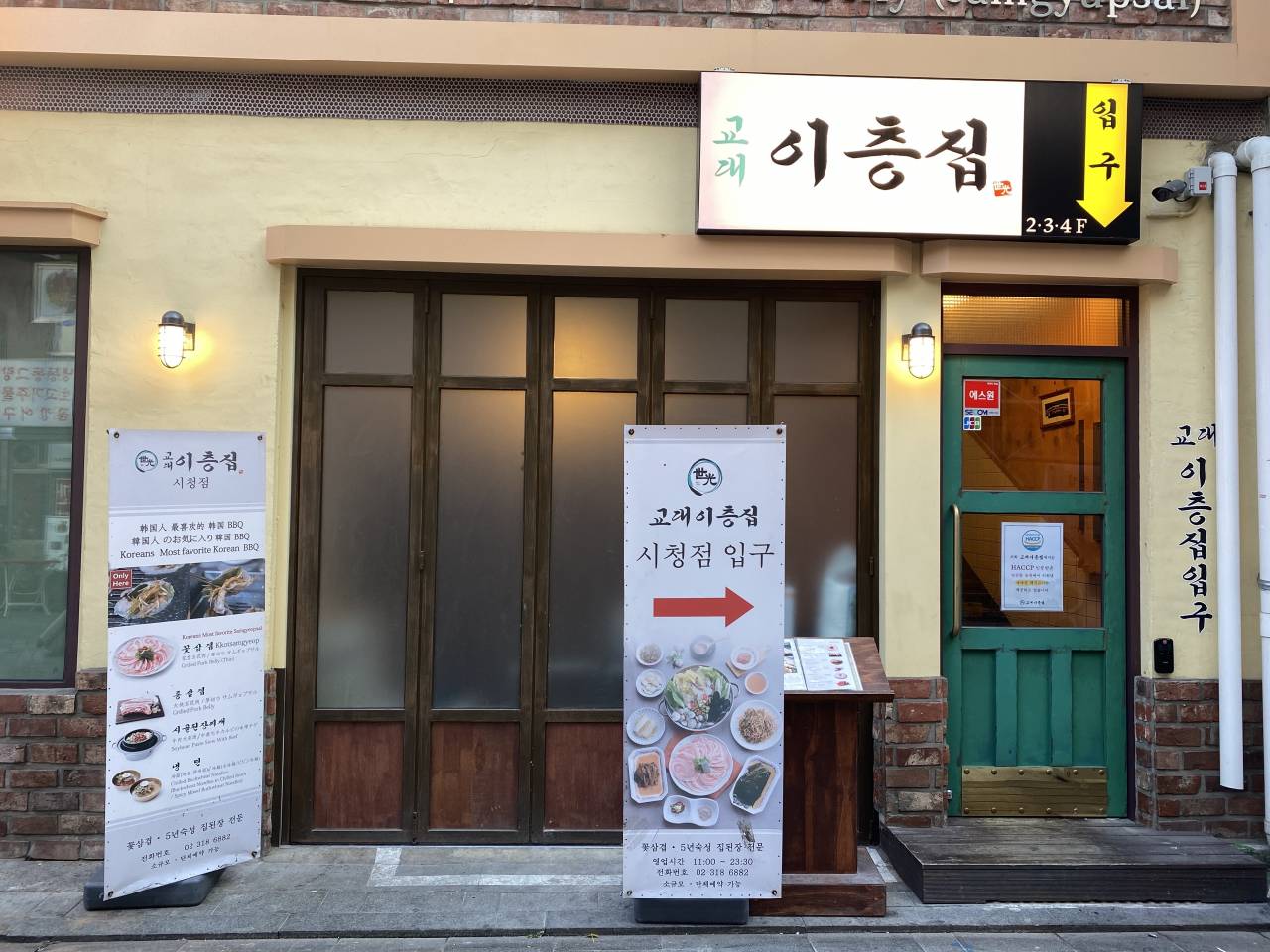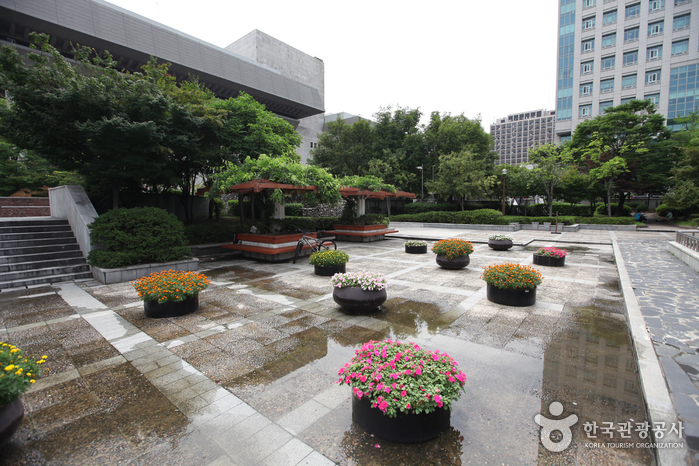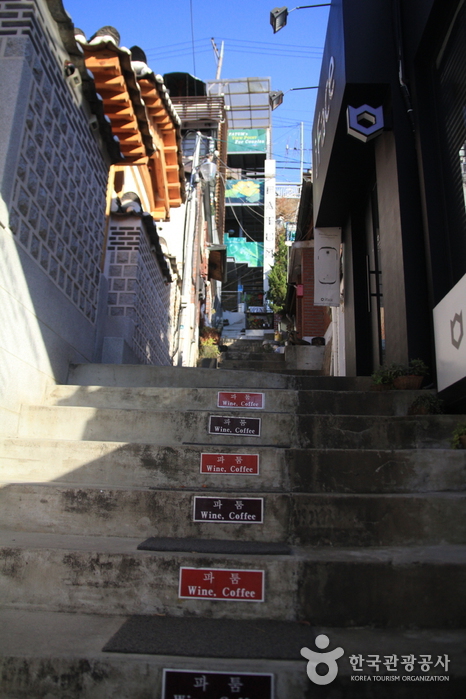Olive Young - City Hall Station Branch [Tax Refund Shop] (올리브영 시청역)
2.1Km 2024-04-22
1, Sejong-daero 16-gil, Jung-gu, Seoul
-
Omokjip Cityhall(오목집 시청)
2.1Km 2020-10-30
38, Namdaemun-ro, 1-gil, Jung-gu, Seoul
+82-2-3789-6882
A pig's trotter(s) specialty restaurant located near City Hall Station in Seoul. This restaurant's signature menu is braised pigs'' feet. Jokbal (pig's trotter) is a representative food loved by Koreans.
Gyodae Icheungjip Sicheong (교대이층집 시청)
2.1Km 2020-10-30
2F, 38, Namdaemun-ro, 1-gil, Jung-gu, Seoul
+82-2-318-6882
A barbecue specialty restaurant located near City Hall Station in Seoul. A store famous for flower-shaped pork belly. The most famous menu is grilled pork belly.
Sejong-ro Park (세종로공원)
2.1Km 2022-08-31
jiha 189, Sejong-daero, Jongno-gu, Seoul
+82-2-722-9598
Sejong-ro Park is located next to Sejong Center for the Performing Arts in central Seoul. Inside the park, there are wooden benches and shaded areas where people can sit and relax. Also available are water fountains, a round outdoor stage, and various sculptures. The lunch crowd from the nearby office buildings often come to the park during weekdays. On the weekends, the park is also used as a venue for outdoor weddings.
Seoul's anthem and the poem "Bulnori" by Ju Yo-han are written on a memorial stone that can be found inside the park.
European Christmas Market (유러피언 크리스마스 마켓)
2.1Km 2024-12-03
B1 Samseongyo-ro, Seongbuk-gu, Seoul
+82-2-2241-6381
European Christmas Market aims to exchange and promote cultural values with international visitors and local residents by celebrating Christmas according to its area of origin, Europe. Visitors can experience European Christmas through food, music, performances, and other enjoyable events.
Beodeul Maru - Korea Cultural Heritage Foundation Branch [Tax Refund Shop] (한국문화재재단 버들마루)
2.1Km 2024-10-15
37, Samcheong-ro, Jongno-gu, Seoul
-
Fatum (파툼)
2.1Km 2019-12-20
86-5, Samcheong-ro, Jongno-gu, Seoul
+82-2-739-9888
FATUM is famous for its great view of Samcheong-dong. Each floor is decorated with a different theme, from natural rocks on the first floor, comfort on the second floor, and indoor viewing places on the third and fourth floors, and outdoor seats on the fifth floor. The view features beautiful scenery including Bugaksan Mountain, Inwangsan Mountain, and Gyeongbokgung Palace at once, as well as a fantastic sunset from the café.
CU - Sungin Dongyang Paraville Branch [Tax Refund Shop] (cu숭인파라빌점)
2.1Km 2024-06-26
1F, #104, 251, Nangye-ro, Jongno-gu, Seoul
-
Gwanghwamun Gate (광화문)
2.1Km 2024-12-04
161 Sajik-ro, Jongno-gu, Seoul
+82-2-3700-3900
Built in 1395 under the reign of King Taejo, the first king of the Joseon dynasty, Gwanghwamun Gate is the southern gate of Gyeongbokgung Palace. It is also the main gate of the palace, therefore larger and fancier in comparison to the other gates. Gwanghwamun Gate consists of three arched gates; the center gate was used by the king, while the other two were used by the crown prince and royal officials. The tall granite walls of the gate serve as a platform for the wooden gate tower that watches over the city. The gate has a sign with its name written at the top center of the gate tower.
Gwanghwamun Gate went through several damages and restorations over the course of history. It was first severely damaged during the Imjin War (1592-1598) and was not restored until the reconstruction of Gyeongbokgung Palace in 1864. Under the Japanese administration, the gate was demolished and relocated to the north of the palace's eastern gate, followed by series of damages during the Korean War (1950-1953). In 1968, Gwanghwamun Gate was relocated back to the south of the palace and was rebuilt using concrete; however, the gate’s position was shifted a few meters away from its original location. In 2006, a major reconstruction project took place to restore Gwanghwamun Gate to its original state and location, disassembling the structure completely and replacing concrete with granite and wood. After three years and eight months of construction, Gwanghwamun Gate was fully restored to its original form and was open to the public on August 15, 2010.
![Olive Young - City Hall Station Branch [Tax Refund Shop] (올리브영 시청역)](http://tong.visitkorea.or.kr/cms/resource/77/2878577_image2_1.jpg)





 English
English
 한국어
한국어 日本語
日本語 中文(简体)
中文(简体) Deutsch
Deutsch Français
Français Español
Español Русский
Русский